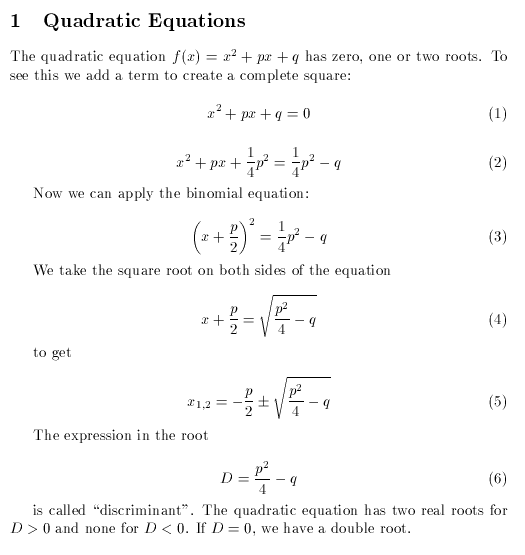latex mytext.tex
This creates (among others) a file mytext.dvi, which contains the layouted document in a LATEX-specific format.
xdvi mytext.dvi
or another dvi viewer program and go back to 1 to apply corrections, if necessary.
dvips mytext
which can be printed with a Postscript printer or displayed on the screen with ghostview.
| OPTIONS | describe some general parameters like paper format or basic font size (a4paper, 11pt) |
| TYPE | type of document (article, report, book) |
| PREAMBEL | commands with special style infos or macros |
| TEXT | the text with additional commands |
The generated document looks like:

\begin{equation} ... \end{equation}
displays the formula in a line of its own and adds an equation number.
| name | result |
| \alpha, \beta | |
| \Gamma, \Delta |
|
| \frac{2}{4-x} | |
| \a_i, exp^{4\pi i} |
|
| \left( a*a \right) |
|
| \sqrt{42+y} | |
| \int_0^1 x^2 dx |
|
![]()